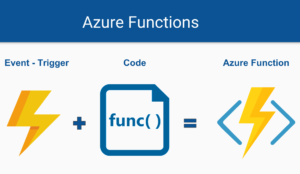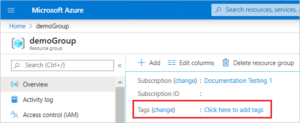App Center. Today, user expectations for mobile applications are very high and higher if they are consumer-oriented. The truth is that a competitive app is just a step away from success and failure and that reviews can make or undo adoption.
It’s also important to think of employees as consumers, as they expect the same high-performance experiences in their work applications that they get from their companies they interact with on a daily basis to streamline their work.data:image/gif;base64,R0lGODlhAQABAAAAACH5BAEKAAEALAAAAAABAAEAAAICTAEAOw==
DevOps provides a way to keep up with these high expectations and the demands of evolving users, especially when it comes to the world of mobile apps.
Note: The mobile app delivery process poses unique challenges compared to web applications.
Challenges in the mobile development world
On the one hand, we have that the entire mobile ecosystem has a lot of tools, applications, work environments, etc. to be able to develop our applications which at the time and cost level being in various markets can be a little painful.
Today, we are seeing how there are certain Frameworks that solve this problem. However, error tracking, maintenance, updating, market adaptation, etc. remains a challenge.
Apart from the working environments offered by the different tools, we can also see a very fragmented mobile ecosystem, with a lot of devices and operating systems that change frequently.
On Android, we can see how at the end of 2017 the predominant operating system is Marshmallow with 30.9% of the device market. Today (August 2020) Pie dominates the market with 39.9% of the market. It is clear that the popularity of OS versions on Android changes very quickly.
In iOS, we have that by the end of 2017 the most used version of the iOS OS was iOS 11 with 59% of the devices on the market. Three years later we have iOS 13 and an iOS 14 beta released.
It is very important to keep this data in mind when launching mobile apps for mass consumption. Many teams bypass this type of data to focus on the development of their applications and this can be reflected in reviews in app stores that can affect app downloads or brand perception of the company or product.
And to put the cherry on the paste we have devices in all shapes and sizes.
We have tablets, iPads, new folding phones, or double screens. There are many variables and conditions that there are when it comes to developing a very good application for users.
And end-users, regardless of the device, still have very high expectations. Staying competitive in this environment requires embracing new changes through innovation and mobile DevOps to continuously build, test, and update our app.
Rapid innovation and continuous application launch
Mobile DevOps aims to enable important business and technical decisions to be prioritized while providing value to users. This requires rapid innovation and continuous application launch.
To ensure user loyalty, the mobile app team must provide the correct update to the right customer at the right time. This can be achieved by controlling the entire lifecycle of mobile apps.
How? Through Intelligent Design and Development, testing, and constant monitoring of our applications.
Providing good quality applications to users and learning from their overall experience is a must.
Okay, Luis. I got the idea, and now? Well, ideally it would be to work with a tool that helps us:Minimize work in progress.Ensure the highest quality user experience for new applications or updates.Scale delivery with an automated process.
That’s why I want to introduce you…
App Center
App center allows us to automate the entire development lifecycle of our apps for iOS, Android, Windows, and macOS while learning from the market, its users, and the feedback received.
Generally app center is an integrated development service for building, testing, launching, and monitoring desktop and mobile apps.
The vast majority of platforms are supported by APP Center, for example:
Launch your app faster with DevOps
Now we can deliver from our application faster than ever with app center:Build your app on every commitTest your app automatically on real devicesAutomatically distributes to beta testers or directly to stores
Builds in App Center
Builds in App Center allow us to automate this whole process, test our code, and free our pipeline.
With app center builds we can…Generates an automatic build for each built-in codeManage your code in a Git repositoryManage your branchesIntegration with GitHub, Bitbucket and VSTSCreate your iOS apps without a macOS
Tests in App Center
In App Center, we can take Tests to find general or particular errors on any device before we launch our app.
With app center tests, we can…Validate our code and launch better apps, faster.Verify that our apps work properly on the devices that the user will have or our target audience.
It is good to mention that app center supports:
- +2000 real devices
- +400 different device configurations
- Tests can be written for iOS and Android apps in: Xamarin UITest, Calabash, Appium, or Espresso.
Distribution and Code Push
As mentioned above, in App Center we can distribute and launch our applications to stores. This is in order to automate the release process and promote validated builds in app stores.
In app center we can…Specify a tester group or create an open beta recruitment page. Connect that group to a branch to send updates automatically each time the code is updated.Once a candidate beta has been tested, the same build can be sent directly to Intune, Google Play, or App Store Connect. App Center tracks your builds through each release.
Best post-launch engagement
With App Center, we can now have a better commitment to the delivery of our applications after we launch it.
Diagnostics in App Center
In App Center, we fear a Diagnostics section that collects or stores data in real-time for us to prioritize and correct critical errors.
Error reports are grouped for common causes, highlighting the relevant error stack so that errors can be located by file and line number.You can also search for specific user accidents and explore individual reports to find event browsing paths and custom data attachments.
Analytics in App Center
With analytics, we can see all the information related to the user’s devices, our application, and much more.
Live analytics for sessions, events, crashes, and more
See session and event streaming activity right away, and collect metrics that become more useful over time.
Who? What?
Is your audience growing? Which devices and operating systems are most common? What features are popular? Get direct answers to the questions you’re interested in.
It includes three features: Audience, Events, and Log Flow. With these features and all the data provided, we can analyze the needs of our users.
Audience
- Do I need to translate my application into another language?
- Are my users using the latest version of the app?
- What are the most commonly used devices?
- Can I remove support from the previous version?
Events
- What is the most viewed content?
- What content do users like best?
- How many people completed the form?
- What is the average age of users using my app?
Log Flow
- Logs to ensure integration with App Center.
- Session logs, locks, events, and properties.
- Automatic update every 3 seconds.
I hope that this article will be a starting point for those who have not automated their development and launch processes. I’d like to know that you think all this and if you were helpful in the comments 😉
For extra content, follow me on Instagram and LinkedIn! Thank you for reading!




